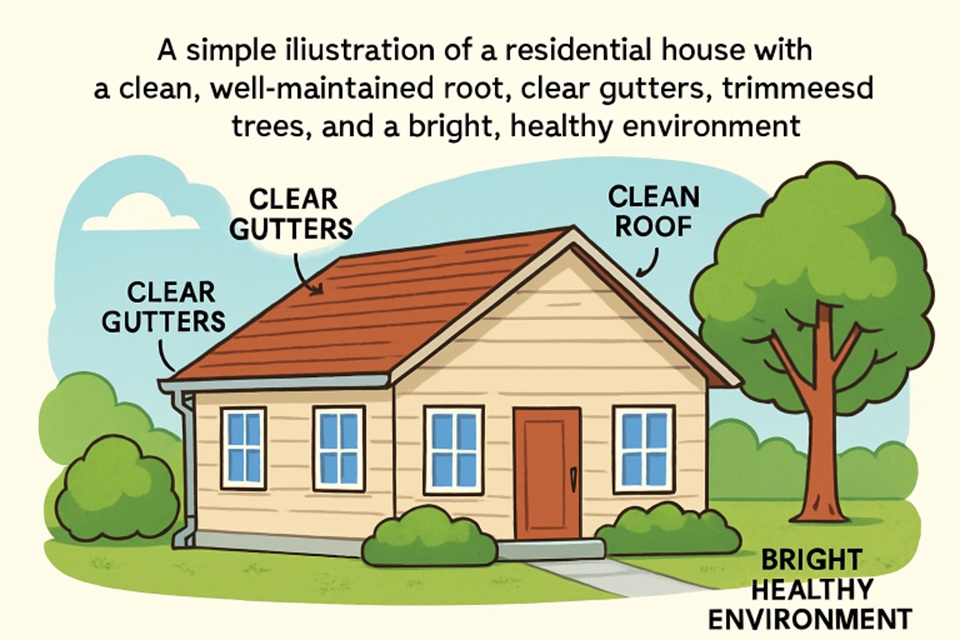Key Takeaways:
- Inspect your roof at least twice annually for visible signs of wear or damage.
- Clean gutters and downspouts regularly to prevent water buildup and leaks.
- Trim tree branches to minimize debris and avoid physical roof damage.
- Remove moss and algae promptly to protect roofing materials.
- Ensure proper attic ventilation to extend roof life and improve energy efficiency.
- Fix any detected roof damage immediately to prevent costly repairs.
- Adjust your maintenance routine according to seasonal needs to address specific risks.
- Consult professional roofers for inspections and complex repairs.
Proper roof maintenance is essential for every homeowner who wants to safeguard their property from weather damage and avoid unnecessary expenses. Being vigilant about your roof means you can address minor issues before they escalate, prolonging the lifespan of your entire home’s structure. If you’re looking to maintain your roof in top condition and live in Colorado, consider getting advice and services from trusted roofers in Fraser. Consistent attention and seasonal care are the foundations of a healthy, durable roof system. Routine checks, cleaning, and adopting preventive measures are all parts of a comprehensive maintenance plan. Even something as simple as keeping your gutters clear or regularly trimming back overhanging trees can prevent long-term structural damage. Addressing problems early not only protects your investment but also provides peace of mind knowing your home is secure from leaks and other common roofing issues. Consistent roof care is particularly crucial in regions with dramatic seasonal temperature swings, as these conditions can accelerate wear and tear. Knowing the practical steps for maintaining your roof empowers homeowners to take charge of their property’s health. From seasonal upkeep to contacting professionals for complex concerns, developing a strategy based on best practices will inevitably save time and money over the years.
Table of Contents
Regular Inspections
Establishing a schedule for roof inspections, typically in spring and fall, can make a significant difference. Inspect shingles for cracks, curling, or missing pieces, and always check your attic for water stains, mold, or moisture that may indicate a leak. Spotting these issues early allows homeowners to address minor repairs before they escalate into extensive damage and high repair costs. For further reading, the Family Handyman provides an in-depth look at what to watch for during roof inspections.
Cleaning Gutters & Downspouts
Clogged gutters can quickly lead to major problems by allowing water to pool and seep into your roof or siding. A regular habit of removing leaves, twigs, and debris ensures water flows freely away from your home. This action helps prevent structural rot, mold growth, and pest infestations. Consider installing gutter guards to reduce the frequency of maintenance and increase their effectiveness.
Trimming Overhanging Trees
Trees that grow too close to your structure can do more harm than just dropping leaves. Overhanging branches can scrape and puncture shingles in high winds, while fallen branches during storms can cause immediate roof failures. Regularly trimming these branches helps decrease debris accumulation, provides better sun exposure to prevent moss growth, and reduces the risk of storm-related damage. This tip is especially relevant for properties with wooded or heavily landscaped areas, which tend to accumulate more organic material on roof surfaces.
Removing Moss & Algae
Moss and algae growth, while common in shaded, moist environments, can break down roofing materials over time. It’s crucial to use a soft-bristled brush to remove these invaders and never resort to power washing, as it can loosen shingles or tiles. For long-term solutions, consider installing copper or zinc strips along the roof ridge — rainwater will carry traces of these metals down the roof, which naturally deters moss and algae.
Ensuring Proper Ventilation
Attic ventilation is a frequently overlooked factor in roof health. Inadequate ventilation in the attic allows heat and moisture to accumulate, increasing the risk of shingle deterioration, wood rot, and mold growth. Inspect soffit and ridge vents to confirm they’re open and functioning, particularly after storms with blowing debris. Good airflow not only helps maintain consistent indoor temperatures, but it also prevents ice damming in winter and warping caused by excessive attic heat in summer.
Addressing Damage Promptly
Small roof problems can quickly become severe if neglected. Whether you spot cracked flashing, a missing shingle, or a minor leak, take immediate steps to secure the area. Temporary fixes, such as roofing cement or waterproof tape, can protect your home until a more permanent repair is possible. Delays almost always result in more significant issues, such as mold growth or insulation destruction, that require expensive intervention.
Seasonal Maintenance
The unique challenges each season brings require specific actions. In winter, it’s wise to remove snow to reduce excessive weight and prevent ice damming, which can lift shingles. During hot summers, watch for signs of melting or blistering shingles. The fall season is often the best time for inspections after the threat of summer storms has passed. Preparing for these cycles will protect your roof through Colorado’s unpredictable seasons.
Seeking Professional Help
While proactive maintenance is possible for many homeowners, some situations are best left to experts. Annual inspections by a licensed roofing contractor help catch unseen problems, ensure repairs are made with proper materials and methods, and maintain your roof’s warranty status. Professionals bring a depth of expertise that can add years to your roof’s life and maximize the value of your home investment.
Adopting these best practices for maintaining your roof offers year-round protection and peace of mind. By performing regular checks, cleaning, addressing problems promptly, and leveraging professional expertise when necessary, homeowners can significantly reduce unexpected repair bills and extend the lifespan of their roofing system.


